When I decided to write a prequel to The Gospel According to Yeshua’s Cat focused on Yeshua’s childhood years in Egypt, I let myself in for a crash refresher course in Egyptology. Not that I regretted it—it was a many-months’ voyage into a fascinating culture that has been opening itself up in amazing new ways over the past few years. But one of my most striking discoveries was the art of a 19th C Scottish painter named David Roberts, who toured Egypt and the Near East with his watercolors, copying the ruins just emerging from Egypt’s sand. This is a brief introduction to Roberts’ work and world, and (very briefly) to Egyptian archaeology. All art is by David Roberts unless otherwise noted.
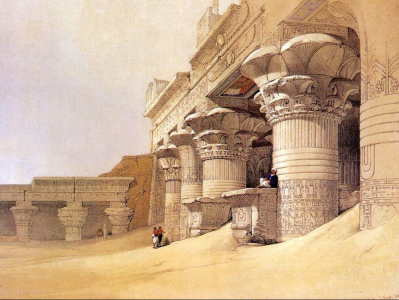
Napoleon’s Egyptian campaign (1798 – 1801), although largely military in purpose, included more than 150 scholars from various fields. These scholars—and the French enlisted men—began the first European excavations of ancient Egyptian sites. Napoleon’s soldiers gave the name cartouche (French for “gun cartridge”) to the elongated ovals carved into the ruins containing inscriptions with the throne names of the great pharaohs—because they resembled the shape of their cartridges.
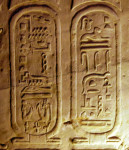

It was also one of Napoleon’s men who unearthed the Rosetta Stone, which provided the key to translating ancient Egyptian hieroglyphs and the later Egyptian demotic script, by preserving inscriptions of an identical text in ancient Greek alongside the two Egyptian languages. “Rosetta Stone” has since entered popular culture as a term for any key unlocking a previously unbroken code.
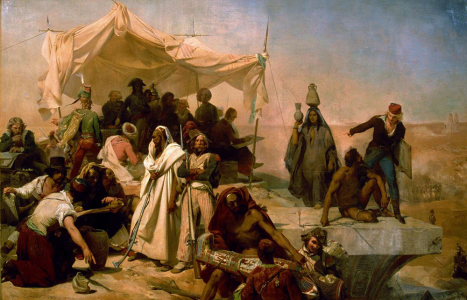
Napoleon’s disorganized and careless excavations of ancient Egyptian sites inadvertently gave birth to the field of Egyptology, as well as to the European fascination with ancient Egypt. Unfortunately, the goal then—and for many years to follow—was merely the finding of valuable artifacts and the discovery of impressive ruins. Most artifacts disappeared into European museums and collections without any attention paid to their place of discovery or context. No one addressed the possibility of protecting the sites so haphazardly unearthed. Europe’s resulting mania for things Egyptian led to the rapid increase in Egyptian travel and brought in the age of the amateur archaeological enthusiast, who often merely added to the confusion. It was into this context that David Roberts stepped in 1938.

David Roberts’ lithographs (produced from watercolor sketches he made in Egypt during the late 1830’s) were the inspiration of many of the visual details in A Cat Out of Egypt. A Scottish painter born in 1796, Roberts spent his early career years as a scene painter for various theatres in Scotland and England. Thanks to the encouragement of J.M.W. Turner, the well-known “painter of light,” Roberts eventually abandoned scene-painting entirely and turned to fine art. Hoping to capitalize on the current popularity of all things ancient Egyptian, he toured Egypt, Nubia, and what is now Israel, Syria, and Jordan, from 1838 – 1840, sketching archaeological and contemporary scenes.
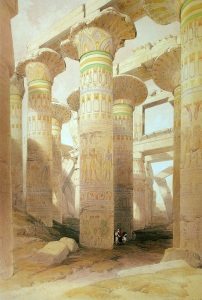
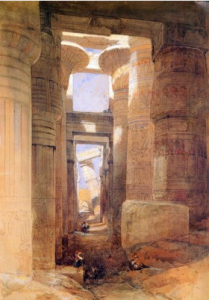

With lithographer Louis Haghe’s assistance, he turned these sketches into lithographs after his return to Britain, which he sold in a series of 6 illustrated volumes, including 248 separate plates, each colored by hand. Queen Victoria was his first subscriber.
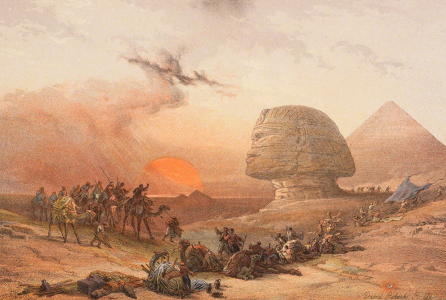
Even without scholarly familiarity with ancient Egypt, anyone who has read Elizabeth Peters’ popular Amelia Peabody mysteries is familiar with the chaos of greed, graft and thievery that stamped Egyptian excavations from the mid-19th C until the middle years of the 20th C and even beyond. But David Roberts’ lithographs preserve the appearance of Egypt’s great temples and tombs as they looked before the ravages of exposure and abuse took their toll. I think you’ll agree that they have a magic all their own.
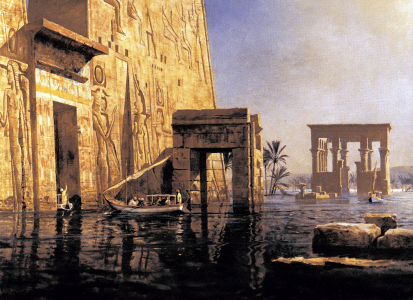
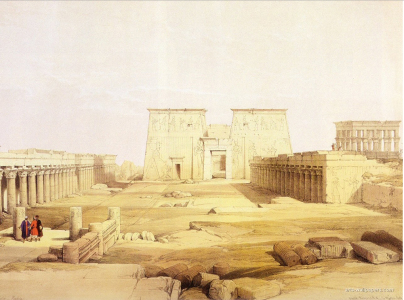
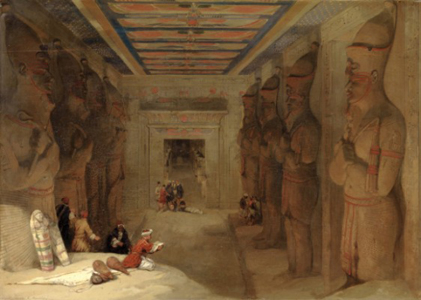
Finally, here is one of the Roberts paintings that inspired the cover of A Cat Out of Egypt:
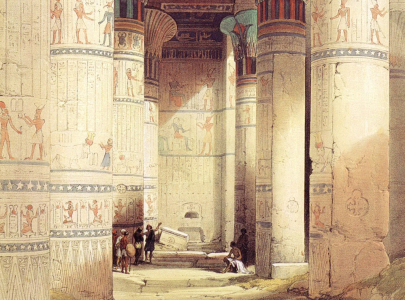
.


